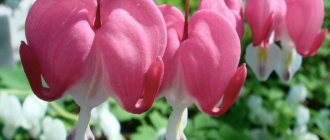Levkoy, matthiola, or in common parlance, night violet is a plant that can be grown not only for decorative purposes, but also to attract pollinating insects to the site. This unpretentious, easy-to-grow flower was previously widely used in landscape design, and later went out of fashion, but even now it can decorate any garden plot. To enjoy the look and aroma of the plant, the gardener needs to know the main features of the Levka culture: growing from seeds, rules and subtleties of caring for it.
Levkoy, growing from seeds
Description of the plant
Levkoi (Matthiola) is a genus belonging to the cabbage family and includes annual, biennial and perennial plants. In warm climates, perennial gillyflower can be grown; in our conditions, the plant will not survive frost. The genus includes at least 50 species. They come mainly from Europe, North Africa, Asia. Typically, several species are grown as ornamental plants in open ground. The scientific name Mattiola is associated with the name of Pietro Andrea Mattioli (1500-1577), an Italian artist and botanist. The name Levkoi means "white violet" in Greek.
The genus's range includes Europe, North and East Africa, Central and South-West Asia. There are 10 species in Europe, most of the rest are distributed in Asia. As introduced (relocated) plants, they are present in Australia and North America.
Botanical characteristics of plants of the genus Matthiola:
- Herbaceous plants, rarely woody at the base, up to 90 cm high. Glabrous or covered with single bifurcated, tree-like or star-shaped hairs. Shoots are straight, unbranched or branched, often dense at the base, straight or creeping.
- Leaves are basal and stem, with petioles or sessile. Whole or serrated edge of the leaf blade, sometimes pinnate. Lanceolate shape.
- Levy flowers are collected in clusters; when fruiting, the inflorescences become longer. The four parts of the calyx are oblong or narrow, the inner pair is pouch-like expanded. There are also four petals of the crown, yellow-green, white, pink, red, brown. The petals are rounded or elongated at the top, much longer than the sepals of the calyx. There are 6 stamens, 4 of which are longer.
- The fruits are elongated, polyspermous pods, round in cross section, sometimes with constrictions.
Kinds
There are 3 types grown in our country:
- Levkoy gray or gray (lat. Matthiola incana) - grown in the Middle Zone, Moscow region and to the south.
- Fragrant leftover (lat. Matthiola fragrans) - grown in the Voronezh, Rostov regions and further south.
- Levkoy Tatar (lat. Matthiola tatarica).
It is rare to see the long-petaled gillyflower (Matthiola longipetala), which smells great but is not particularly ornamental.
The natural species most often grown in gardens is the grey-headed left-wing, its cultivation will be discussed in this article. About 20 million of these flowers are sold annually on Dutch stock exchanges.
Levkoy grey, often called matthiola grey, is a representative of the natural flora of the Mediterranean and Canary Islands. Its natural habitats are also found in Europe, Asia, and Africa. In our conditions, it grows to about 60 centimeters and has straight shoots.
Levy flowers appear in June and persist until July, forming magnificent inflorescences with an unusual, very strong, characteristic odor, a bit like the aroma of the spice cloves. For this smell, which intensifies at night, it is also called “night violet”. The flower is large and expressive. The stems and leaves are covered with a layer of hairs, and numerous branches form on the stem.
Fertilizers
It is better not to give preference to organic products at all, with the only exception being wood ash. It is still recommended to use mineral ones, and in the spring this is absolutely necessary.
Varieties
The wealth of forms and varieties of gray-haired left-handed grass is varied. When purchasing seeds, you need to pay attention to the flowering period. You can choose varieties with double or simple flowers, tall or short. Low varieties (Elegance and Cinderella series) can be used for growing in all types of containers. Varieties also differ in flowering time; flowers can develop on shoots from June to the end of August.
Varieties are divided into 2 groups:
- The first group includes varieties that produce branched shoots, that is, multi-stemmed. They are great for flower beds.
- The second group includes varieties with one shoot, tall and short. Such shoots end in inflorescences on which a double or simple flower is located.
The double flower of the gillyflower is sterile, since its stamens and pistil have turned into additional petals; it does not produce seeds. Therefore, seeds are collected only from simple flowers. From such seeds, plants with double and simple flowers develop, approximately 50% each (for some varieties this proportion is different). Flowers can be white, pink, yellowish.
Depending on the variety, plants may vary in color, plant shape, and flower shape. Height can fluctuate in the range of 60-70 centimeters. There are dwarf varieties that reach only 20 centimeters. The leaves are mostly lanceolate, slightly pubescent and have a rounded tip.
The group that unites single-stem varieties of gillyflower includes Excelsior. Examples of varieties:
- "Rawa" Rawa is a cherry-colored variety.
- “Bara” Bara is a variety with double, beige flowers.
- "Opal" Opal - white flowers.
- "Antar" Antar is a variety with double lilac-pink flowers.
- "Weiss" Weiss - double, white flowers.
- "Kanu" Kanu - red flowers.
- "Yucca" Juka is an interesting plum-colored variety.
- “Khash” Hasz is a variety with bright pink flowers.
- "Hena" Hena - light yellow flowers.
Another group of single-stem varieties is Varsovia, which includes:
- "Bona" Bona - with double, bright yellow flowers.
- "Yaga" Jaga - pink flower.
- "Olga" Olga - plum-colored flowers.
- "Mera" Mera - has white flowers.
Multi-stemmed varieties of gillyflower include:
- The “Dresden” group of varieties - plants reach 60 centimeters in height, are highly branched, compact, and capable of repeated flowering.
- “Bomb” group – characterized by high height and colorful variations.
- The Erfurt group are small plants that look good on the balcony.
The duration of growing gillyflower depends on the temperature and length of the day:
- In order for the plant to reach the desired height and number of leaves, it needs a temperature between 8° and 23° Celsius.
- Lower temperatures affect the growth of plants, which become shorter, have fewer leaves, and also affect the length of the inflorescences.
Therefore, during the growth period it is necessary to ensure the correct temperature. This can be done in greenhouses where they grow gillyflower for sale for bouquets.
The most interesting varieties of gillyflower with double flowers:
- white: Opal, Mera, Maribell White, Regal White, Noble White;
- cream: Centum Cream, Mid Cheerful Yellow, Noble Cream;
- pink: Khash, Yaga, Maribell Rose, Maribell Dark Rose;
- purple: Kanu, Mawa, Hala, Opera Deborah, Jordyn Lavender, Aida Blue;
- burgundy: Kama, Maribell Red, Opera Francesca, Jordyn Red.
Mattiola in landscape design
It’s just wonderful to have a spicy-fragrant garden under your window or near your porch to enjoy the wonderful aromas in the evenings.
Combining different varieties of gillyflower by size, color and flowering period will help in creating interesting flower beds and flower beds.
1 of 4
In addition, leftover can be grown not only in a flowerbed, but also in a container, outdoor vase and balcony box, which will give your site a special charm.
Planting location, soil requirements
Many people wonder how to properly grow leftover. The plant prefers warm, fairly sunny positions.
The soil for left-handed grass should be:
- fertile;
- humus;
- permeable;
- The pH varies from neutral to slightly alkaline, and Levy loves soils with a significant proportion of calcium.
On weaker soil, matthiola also grows well, but blooms worse. On weak soils, before planting gillyflower, it is worth digging up the area and adding well-rotted compost, or doing this in the fall before spring planting.
Levkoy – photo
Levkoy is a very beautiful and spectacular plant. And our selection of photographs of blooming gillyflower is the best confirmation of this!
Photo: 2sotki.ru
Photo: funart.pro
Photo: prorastet.ru
Photo: species.wikimedia.org
Photo: oir.mobi
Photo: dm-arina.rf
Photo: artfile.ru
Photo: liveinternet.ru
Photo: mykaleidoscope.ru
Photo: plantarium.ru
Photo: pinterest.ru
Photo: mykaleidoscope.ru
Photo: stihi.ru
Photo: oir.mobi
Photo: oir.mobi
Photo: filens.info
Photo: sadogorod25.ru
Photo: ttcomm.ru
Photo: botanichka.ru
Photo: prorastet.ru
Photo: timeshare-ok.ru Photo: liveinternet.ru
Photo: zen.yandex.ru
Photo: peoriagardens.com
Did you like the post? Subscribe to our channel in Yandex.Zen, it really helps us in our development!
Reproduction and planting
Sowing seeds, growing seedlings
Levy seeds can be sown as early as March in greenhouses or boxes. It is quite difficult to propagate levkonia from seeds yourself (plants expect different temperatures and conditions during germination), so it is often grown from ready-made seedlings purchased from the manufacturer and planted in the ground in the second half of May.
To decide when to sow gillyflower seeds, you need to decide when you need to get flowers and whether there are conditions for proper cultivation of seedlings.
The flowering time of gillyflower depends on the sowing time:
- from sowing in a greenhouse in early December, flowering gilly leaves are obtained in the second half of April, after approximately 130-136 days (17-19 weeks);
- when sown in mid-December, flowering occurs in mid-May, after 115-120 days (16.5-17 weeks);
- from sowing in late December - early January, flowering occurs at the end of May, after 110 days (15.5 weeks);
- sown at the end of January - bloom in mid-June, after 130 days (18.5 weeks);
- when sowing seeds in March, they will bloom in June-July;
- When sown in May in open ground, flowering will occur after mid-August.
1 gram contains 350-600 levkonia seeds (depending on the variety and growing conditions of the mother plants). To produce 1000 seedlings with full flowers, 6-8 g of seeds are required. Seeds remain viable for 4 years - three-year-old seeds produce more seedlings with double flowers than shorter ones, since seeds with a gene associated with ordinary flowers lose their viability faster.
Before sowing, it is recommended to disinfect the seeds, for example, with the fungicide Funaben T, soaking them for 30 minutes in a solution of this product. It is also necessary to disinfect boxes, pallets and soil.
The substrate for sowing seeds should be light and permeable. You can add 1 part sand to 2 parts compost or universal soil. In an excessively moist substrate that retains water for a long time, seedlings can quickly be affected by pathogens (Pythium sp., Fusarium culmorum, Rhizoctonia solani) - mass plant death occurs. The seeds are sown on the surface of the prepared substrate, lightly pressed down, and then sprinkled with a thin layer of disinfected sand, against which the color of the cotyledons will be clearly visible. Then carefully water, or better yet, spray with a spray bottle.
At a temperature of about 18-20 degrees C, seedlings will appear in 10-14 days.
While growing seedlings, we can decide what kind of flowers we want to have in our garden - with double or simple inflorescences. It is enough to place the seedlings in a shady place for a day and reduce the temperature to about 7 degrees. It is necessary to provide the seedlings with 7–9 hours of daylight. Let's look at the shoots:
- Some seedlings will acquire a lighter cotyledon color. When these seedlings grow, they will produce clusters of double flowers. The light green color of the cotyledons is caused by a gene associated with the double flower gene.
- Seedlings with dark green cotyledons will produce simple flowers that can reproduce.
If we only need seedlings with double flowers, seedlings with dark cotyledons can be removed. Seedlings with double flowers are planted in boxes at a distance of 4 x 4 cm or multi-cell trays and the temperature is raised to 15-18°C.
There are 4 stages of growing young gillyflower seedlings in greenhouse conditions:
- Cultivation at a temperature of 18-21 °C and a relative air humidity of 95-100% continues for 7-14 days, the root increases, the cotyledons are released from the seed coats.
- The first correct leaves appear (at a temperature of 15-17 °C this lasts 8 days - during this time the greenhouse should be ventilated and ensure that the substrate moisture is not too high).
- The first true leaves develop, about 80% of the seedlings are suitable for picking - for 8 days the seedlings should be grown at a temperature of 4-8 °C, creating a 7-hour day (this promotes bud induction and lush flowering).
- At a temperature of 12-15 °C, seedlings are hardened for 7-8 days, after which they are suitable for planting in a permanent place. The juvenile phase - up to the stage of 2-4 pairs of true leaves in early flowering varieties of gillyflower is shorter than in late ones.
The development of plants after they reach the 4th stage is favored by a long 16-hour day. You can turn on the lighting with lamps with an intensity of 150 W/m².
For plants to reach the appropriate height (about 60 cm) and number of leaves, a temperature of 8 °C to 23 °C is required - the lower it is, the shorter the plants and the fewer leaves they have. In the same way, temperature affects the length of inflorescences. The growing period is shortest when at the end of the flower formation period the temperature is 15-18 °C.
Of course, not everyone has such greenhouses; similar regimes for growing gillyflower seedlings are used when growing flowers for sale. For home growing, seedlings are first germinated at 8 degrees, for example, on a balcony. Then the seedlings are planted at a distance of 2 × 3 cm into boxes filled with fresh soil, preferably steamed. The plants are watered very moderately and the temperature is maintained at 12-15 °C, and when they grow about 5 cm, they are planted in greenhouses.
At the end of May, gillyflower seedlings can be transplanted into soil or a pot. Some varieties grow so quickly that it takes only 10 weeks to develop from seed to full bloom.
Seedlings should be pinched - manually remove the tops of the shoots to stimulate tillering.
Landing in the ground
Levkoy is very sensitive to frost. Seedlings need to be hardened off in advance. Levy can be planted in open ground when it becomes warm enough outside.
The plant has certain requirements for mineral nutrition. Before planting, the soil should be mixed with a full strength fertilizer. In the future, it is worth enriching the planting area with potassium.
When planting gillyflower in open ground or greenhouses, you should pay attention to the plants of your neighbors. Levkoy does not like the substrate after other brassicas and is susceptible to pathogens characteristic of this family (cabbage clubroot). The break between planting plants from the cabbage family should be at least 4 years.
Levka is planted in flower beds at the end of May at intervals that depend on the specific variety.
The distance between plants should be:
- for varieties with a large number of shoots - 30 × 30 cm;
- for varieties with one stem - 15x15 centimeters.
After planting in the garden, you need to take special care of the seedlings, not forgetting about watering.
Growing and care
Levkoy does not cause problems when grown in suitable conditions. It is often grown as flowers for bouquets, but it is also worth planting in flower beds in the garden, in pots, decorating balconies and terraces. Care consists of regular watering, frequent weeding and thinning. Seedlings that are planted very densely will not grow well.
We will get the most beautiful flowers if the summer is not too humid, but not too hot; the optimal temperature for gillyflower varies between 18-20 °C.
Watering, fertilizing
Since the roots are shallow, the plant does not tolerate drought and requires watering during periods without rain. Levkoy loves regular watering, but does not like waterlogged places. Already slightly overdried soil will manifest itself as wilting of plants. It is better to water it early in the morning and in the evening. High temperatures have a negative effect on wet leaves and roots of euconia. The plant prefers regular watering with less water, but at constant, short intervals.
The plant has significant requirements for soil fertility, so before planting we apply complete fertilizers and mix them with the soil. After this, you can feed Levka with preparations with a high potassium content, for example, fertilizers for tomatoes or multicomponent formulations for flowering plants.
Levkoi with double flowers absorb the most potassium, calcium and nitrogen and the least phosphorus. According to research, these plants absorb about 90% of the available nutrients within 40 days after planting the seedlings, that is, in a relatively short period. And during this time, they should be provided with nutrients in easily accessible forms. In the first growth period, nitrogen absorption predominates, and in the second, potassium absorption. It is advisable to feed the plants with liquid fertilizers at a concentration of 0.2% every 12-14 days.
Attention! Large doses of fertilizers enhance growth, but deteriorate the quality of flowers.
Diseases, pests
Levkoy is susceptible to diseases of cruciferous plants:
- Cabbage clubroot - manifests itself as rotting thickenings appearing in the underground part of the plant.
- Bacteriosis, causing leaves to turn yellow and then fall off.
- Gray rot - manifested by the appearance of an ash coating, causing rotting of plants.
When disease and pest problems occur, organic methods or pesticides should be used. Affected parts of plants must be removed and burned.
Aphids are one of the most dangerous pests when growing gilly leaves. Pests are often invisible as they feed on shoots under flowers and leaves. The green color makes them difficult to identify. They suck out the juices, weakening the plants. The fight is carried out with insecticides, for example, using Mospilan 20SP, Karate or drugs of natural origin.
Planting gillyflower seedlings in open ground
If the seedlings have been well hardened, then they are not afraid of light frosts, so feel free to plant them in the garden in mid-May.
Seedlings must have at least 4 leaves. The best time for planting is in the evening, when the sun is already setting.
Before planting, make small holes and fill them with water. Without waiting for the water to be absorbed, plant the seedlings.
It is advisable that these are peat cups, then you can simply dig them in without disturbing the plants.
Once planted, there is no need to water. To make the seedlings take root faster, shade them for several days.
Growing area
Choosing the right location to grow matthiola is very important if you want a healthy, flowering plant.
The site should have good lighting and protection from draft winds.
Choose a place with fertile, turfy-sandy, well-drained and loose soil, preferably one that has a neutral reaction.
The soil should be moist, but without stagnant water. Excess moisture has a bad effect on the plant, even leading to the death of the seedlings.
Scheme of planting seedlings
The planting pattern is determined by the variety of gillyflower; a bag of seeds is usually supplied with such information.
For a low-growing and single-stemmed matthiola, the distance between seedlings should be at least 0.15 m, for a tall pyramidal one - at least 0.25 m, for a spreading one - at least 0.35 m.
Too thick plantings negatively affect the growth and development of flowers.
Application
Levkoy is perfect as a decoration in gardens and on balconies. Low varieties with double flowers and varied colors are suitable for balconies.
Levka is famous for its intense aroma, so it can often be found in recreation areas, under windows. In order for the plant to delight with flowers for a long time, it is worth sowing it approximately every 14 days.
Levy also works well as a cut flower for bouquets. To prolong the freshness of the flowers, we tear out the entire plant along with the roots. Then we immerse the entire plant in water for several hours. Only after this soaking do we remove the roots and place the flowers in a vase. This will allow the flowers to stay fresh for 7-10 days.
Levka in a pot will effectively decorate any windowsill. This is a beautiful plant that represents elegance and extraordinary grace. Its decorative flowers will decorate your garden or balcony. The species is ideal for flower beds, like a flower in a vase.
They can contrast beautifully with dark green shrubs and perennials. Along with popular garden plants (heliotrope, daylilies, calendula, phlox), gillyflowers are suitable for village gardens. They look beautiful in naturalistic plantings when creating country-style gardens.
Thanks to their unusual beauty, left-wings used to often visit gardens. Now they are becoming popular again. Their unique aroma will delight many flower lovers. Moreover, the plant does not cause any problems in growing and does not require special care.
Hardening of seedlings
Before planting Levka in an open garden bed, harden off the seedlings for a couple of weeks to make it easier for them to adapt to new living conditions.
This is achieved by lowering the temperature: take containers with seedlings to the balcony, in the canopy, or simply open the window for a few minutes, each time increasing the time spent in the cold.
In the last two days before planting, you don’t have to bring the seedlings into the house, leaving them in the hallway or with an open window all day and night.











